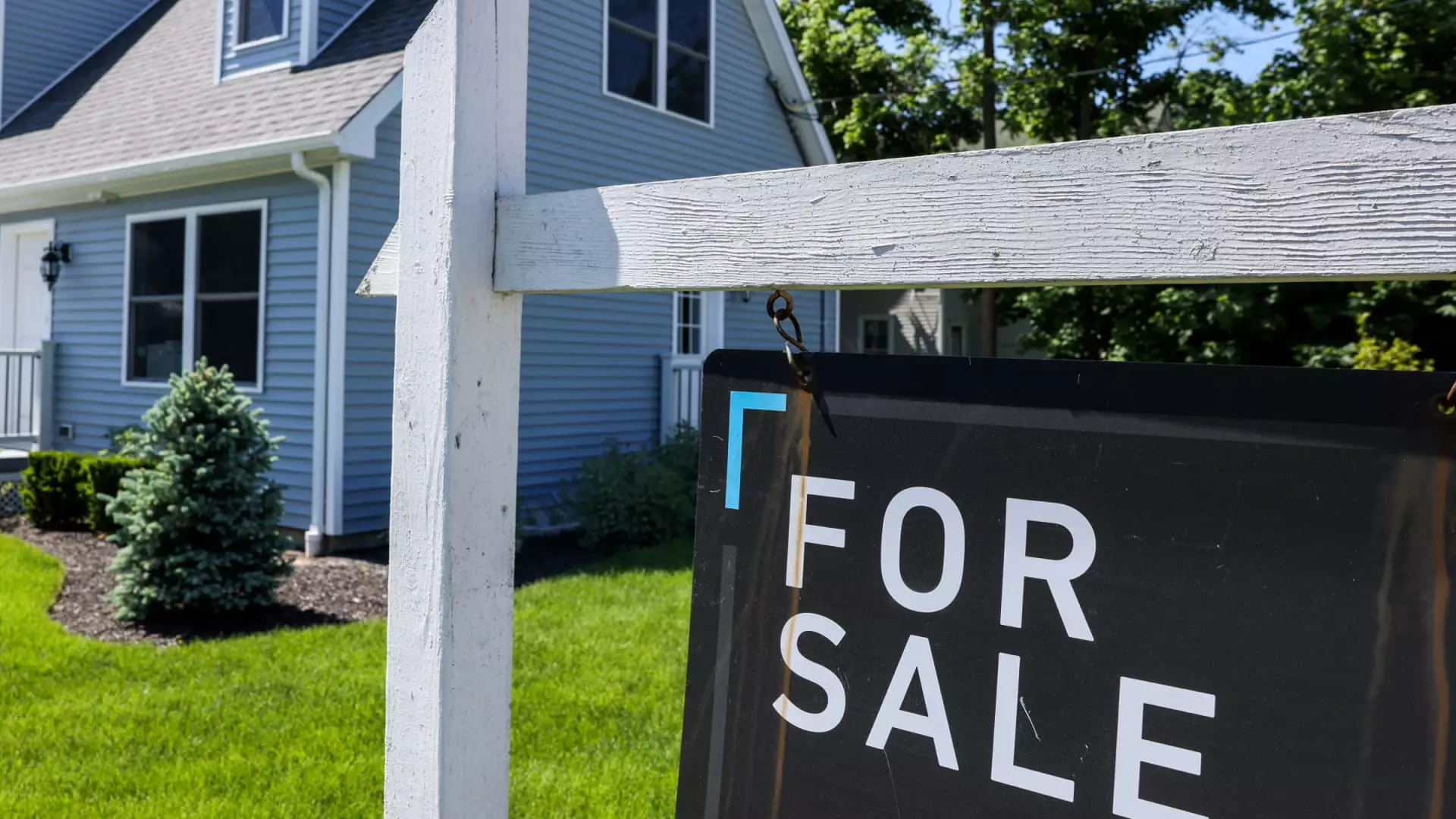Recent reports trumpet a surprising 9.4% jump in mortgage applications, seemingly signaling renewed vitality in the housing market. But this uptick, sparked by a brief dip in interest rates, masks underlying fragility. It’s tempting to see this as a sign of economic recovery or at least stabilization, yet such enthusiasm ignores deeper systemic issues. The transient nature of these rate fluctuations and their limited impact on actual demand suggest that this surge is less a sign of robust health and more an ephemeral blip, driven by short-term incentives and market noise.
Mortgage rates, hovering just below 6.8%, reached their lowest in three months, prompting a temporary flurry of refinance activity. While a 9% weekly increase on refinances and a 25% rise in purchase loan applications might seem promising, they fail to address the underlying hesitations consumers harbor. High cancellation rates, wavering consumer sentiment, and inconsistent pending sales paint a much different picture—one of uncertainty rather than confidence. The market’s recent behavior appears more like a reflexive response to short-lived rate declines rather than a genuine resurgence.
The Flawed Narrative of Recovery and the Danger of Overconfidence
It’s critical to recognize that these recent figures are not necessarily a sign of robust recovery but rather a reflection of market volatility. The common narrative suggests that increasing inventory and moderating home-price growth are fueling demand, but this overlooks the broader picture. Market sentiment remains fragile, and many potential buyers are cautious, holding back amidst economic uncertainties and fluctuating mortgage conditions.
The fact that the average purchase loan size has decreased to its lowest since early 2025 indicates that buyers are becoming more conservative, reluctant to take on larger debt commitments. This cautious behavior signals a market still grappling with instability, not an outright boom. The temporary decline in rates provided a brief window of opportunity, but systemic issues—such as high cancellation rates and stagnant pending sales—continue to hinder genuine market momentum.
Moreover, the recent upward movement in mortgage rates suggests that the supposed recovery is merely a pause rather than a trend reversal. Experts like Matthew Graham offer a sobering perspective: after a period of decline, small rebounds might be just reactions rather than harbingers of sustained growth. Overemphasizing these short-term fluctuations risks fostering false confidence and potentially delaying necessary policy adjustments.
Rethinking Market Resilience in a Time of Uncertainty
From a center-leaning liberal viewpoint, it’s essential to approach these market dynamics with skepticism and a focus on structural stability. The housing market, a critical pillar of the economy, should not be romanticized based on transient data that glosses over pervasive issues like affordability, wage stagnation, and financial insecurity. What this recent surge reveals more than anything is how vulnerable the market remains to external shocks, policy shifts, and the everyday realities faced by American families.
Temporary interest rate cuts may provide short-term relief or a fleeting sense of progress, but they do little to address the deep-rooted inequalities and systemic risks that threaten long-term stability. Policymakers should approach such reports with scrutiny, recognizing that the current optimism could easily revert to caution or decline if broader economic conditions falter.
In essence, this mortgage application bump should serve as a wake-up call: markets are still fragile, and superficial indicators should not distract us from the fundamental reforms needed to create a housing system rooted in fairness, stability, and genuine growth. Relying on short-lived rate drops as a barometer for health is a dangerous misconception—one that could ultimately undermine the very stability we seek to rebuild.

